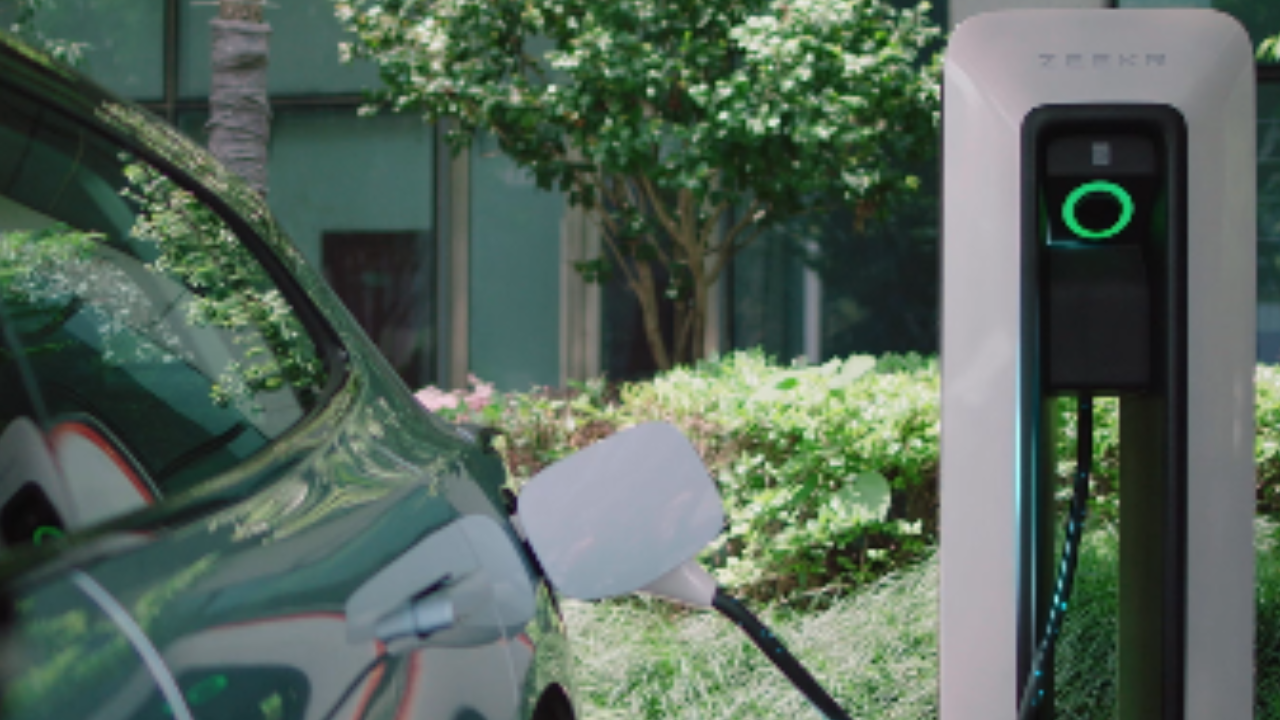An electric vehicle charging pile, commonly called a charging station, is a specific infrastructure intended to provide electricity for recharging electric vehicles (EVs). These stations are essential to meeting the rising demand for electric vehicles (EVs) and usually have one or more charging outlets.
Different charging speeds are offered by the different types of electric car charging pile, which include Level 1, Level 2, and DC Fast Charging. They are positioned thoughtfully along highways, in public parking lots, retail establishments, residential neighborhoods, and business parks to make it easy for EV owners to refuel and promote the widespread use of environmentally friendly transportation.
How Do You Operate An Electric Vehicle Charging Pile?
Via a charging connector, charging piles supply electricity to the car’s battery. The charging procedure differs depending on the kind of setting pile Level 1, Level 2, or DC Fast Charging. While DC Fast Charging offers a direct current (DC) power source for faster charging, Level 1 and Level 2 charging use alternating current (AC).
Kinds of Electric Car Charging Stations
There are various types of electric car charging piles, also called charging stations or points, to meet different charging requirements. The following are the main kinds of electric vehicle charging piles:
Level 1 Charging:
A regular household electrical outlet is required for Level 1 charging, the most basic type of electric vehicle charging. This kind of charging is appropriate for overnight charging and usually runs at 120 volts AC. Even though it’s practical for use at home, users who require a higher daily mileage may need to be more rapid.
Charging at Level 2:
Level 2 charging is a faster and more robust method. It can be found frequently in public and residential settings, operating at 240 volts AC. Because level 2 charging stations can deliver a faster charge, they are appropriate for users who require a shorter time between trips.
DC Fast Charging:
They are also referred to as Level 3 charging. DC Fast Charging is intended to charge devices quickly, which makes it perfect for people who lead hectic lives. An electric car can be set to 80% capacity using one of these direct current (DC) stations in about 30 minutes. DC Fast Charging stations are frequently located alongside highways, allowing owners of electric vehicles to travel long distances.
Superchargers for Tesla:
Tesla, a market leader in electric vehicles, has its exclusive charging infrastructure called Superchargers. These high-power charging stations can quickly charge Tesla vehicles because they are made especially for them. Tesla owners can now easily travel longer distances thanks to the thoughtful placement of Tesla Superchargers along well-traveled routes.
Wireless Charging:
As electric vehicle charging becomes more prevalent, wireless charging technology is gaining ground. By merely parking over a charging pad, users can now charge their vehicles without the need for physical cables, thanks to this creative solution. Wireless charging is convenient and simple, despite not being as popular as conventional charging techniques.
Solar Charging:
Some electric vehicle charging stations use solar panels to produce clean energy to increase sustainability. By using sunlight as energy, these stations minimize their adverse effects on the environment and our reliance on the grid. Solar-powered charging stations facilitate a more sustainable infrastructure for charging electric vehicles.
Various Types of Charging Stations:
Multi-standard charging stations support CHAdeMO, CCS (Combined Charging System), and AC charging, among other charging standards, to meet the diverse needs of electric vehicle users. Due to their adaptability, these stations can accommodate various electric vehicle models and charging requirements.
Conclusion
The dynamic evolution of electric vehicle infrastructure is reflected in the varied array of charging stations for electric cars. The charging landscape is constantly changing to meet users’ needs, from the ease of Level 1 charging to the speed of DC Fast Charging and the inventiveness of wireless and solar-powered options. The future looks even more sustainable and accessible thanks to technological advancements, highlighting the contribution of electric vehicles to developing a more ecologically conscious transportation industry.

